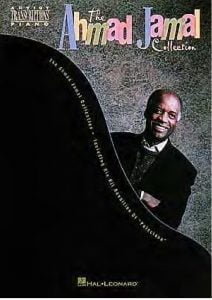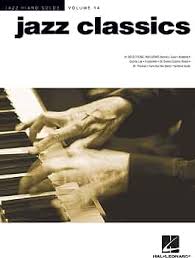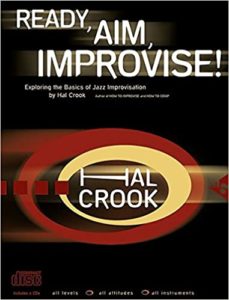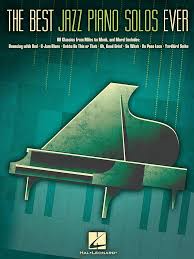Come join us now, and enjoy playing your beloved music and browse through great scores of every level and styles!
Can’t find the songbook you’re looking for? Please, email us at: sheetmusiclibrarypdf@gmail.com We’d like to help you!
Table of Contents
Remembering Ahmad Jamal, born on this day in 1930 (1930-2023)

The Very Best of Ahmad Jamal – Ahmad Jamal Greatest Hits Full Album Collection
Best Sheet Music download from our Library.

Please, subscribe to our Library.
If you are already a subscriber, please, check our NEW SCORES’ page every month for new sheet music. THANK YOU!

Browse in the Library:
Or browse in the categories menus & download the Library Catalog PDF:
Ahmad Jamal: The Architect of Space, Rhythm, and Harmonic Alchemy
Ahmad Jamal stands as a colossus in the landscape of jazz, a pianist whose influence far exceeds the popular recognition his name sometimes receives. More than just a virtuoso, Jamal was a revolutionary thinker, a meticulous architect of sound who redefined the possibilities of the piano trio, transformed the use of space and dynamics, and crafted a harmonic language that resonated deeply with peers like Miles Davis and continues to inspire generations. To understand Jamal is to understand a philosophy of music where silence speaks volumes, rhythm is sculpted, and harmony becomes a luminous, shifting landscape.
Biography: From Pittsburgh Prodigy to Global Icon
Born Frederick Russell Jones on July 2, 1930, in Pittsburgh, Pennsylvania, Jamal was immersed in music early. Pittsburgh, a fertile breeding ground for jazz talent (Art Blakey, Billy Strayhorn, Erroll Garner, Mary Lou Williams), provided a rich environment. He began piano studies at age three, demonstrating prodigious talent. Classically trained, he performed with the Pittsburgh Symphony Orchestra while still a teenager. However, the gravitational pull of jazz proved irresistible. Inspired by the intricate harmonies of Art Tatum and Nat King Cole (whose trio format would profoundly shape Jamal’s own concept), he embarked on his professional journey.
By the late 1940s, he was touring with George Hudson’s orchestra. Crucially, around 1950, he converted to Islam and changed his name to Ahmad Jamal, reflecting his spiritual and personal evolution. In 1951, he formed his first groundbreaking trio: Jamal (piano), Ray Crawford (guitar), and Eddie Calhoun (later replaced by Israel Crosby on bass). This guitar-bass-piano configuration was unusual and became central to his early sound. Crawford’s guitar often functioned percussively, mimicking a drummer’s brushes, allowing for unprecedented textural clarity and rhythmic subtlety. This trio gained significant traction, particularly during a residency at Chicago’s Blue Note club in the mid-1950s.
The breakthrough came in 1958. The live album “Ahmad Jamal at the Pershing: But Not for Me”, recorded at the Pershing Lounge in Chicago with the classic trio of Jamal, Israel Crosby (bass), and Vernell Fournier (drums), became a sensation. Its centerpiece, Jamal’s transformative arrangement of “Poinciana,” became his signature tune. The album’s success was phenomenal, staying on the Billboard charts for over two years and bringing Jamal mainstream recognition. This success solidified his trio format (later evolving to the standard piano-bass-drums) and established his aesthetic: sophisticated arrangements, dynamic control, and infectious grooves.
Jamal relocated briefly to New York but, seeking a quieter life for his family and artistic focus, moved back to Chicago. He later established Alhambra Productions, his own label, demonstrating independence and control over his work. Throughout the 1960s, 70s, 80s, and beyond, Jamal relentlessly toured the world, performed at major festivals, and recorded prolifically for labels like Argo, Cadet, Atlantic, Impulse!, Telarc, and Dreyfus Jazz. He collaborated with stellar musicians, including bassists Jamil Nasser, James Cammack, and Reginald Veal, and drummers Frank Gant, Idris Muhammad, and Herlin Riley.
Jamal received numerous accolades, including the National Endowment for the Arts Jazz Master award (1994) and a Grammy Lifetime Achievement Award (2017). He remained a vital, creative force well into his eighties, performing with undiminished energy and conceptual clarity. Ahmad Jamal passed away on April 16, 2023, at the age of 92, leaving behind an unparalleled legacy.

Music Style: The Art of Subtraction and Orchestral Intimacy
Jamal’s style is instantly recognizable and defined by several core principles:
- Space and Dynamics: This is perhaps his most revolutionary contribution. Jamal understood that silence and space were not voids but active compositional elements. He employed dramatic pauses, sudden shifts from thunderous chords to delicate single-note lines, and a masterful control of volume. This created tension, suspense, and an unparalleled dramatic arc within his performances. As he famously stated, “I don’t like to play with drummers who play too much. I like to play with drummers who play with me.” He treated the trio as a single, breathing organism where every sound, and every silence, mattered.
- Orchestral Approach to the Trio: Jamal didn’t just play piano; he orchestrated for the trio. He conceived arrangements where the bass provided countermelodies and harmonic foundations, the drums offered coloristic accents and interactive propulsion, and the piano wove intricate lines, chords, and rhythmic punctuations. He used the entire keyboard, creating a vast sonic palette from rumbling low-end ostinatos to glittering high-register flourishes. His trios sounded larger than three instruments.
- Rhythmic Precision and Groove: Jamal’s sense of time was impeccable and infectious. He had a deep connection to the blues and gospel roots, but filtered them through a sophisticated, often Latin-tinged sensibility (“Poinciana” being the prime example). His left hand was a rhythmic engine, often laying down vamp-like figures or percussive chords that locked tightly with the bass and drums. He favored crisp, articulate attacks and a buoyant, dancing feel. The groove was paramount, but it was a groove of elegance and control.
- Vamp-Based Structures: Many Jamal arrangements rely heavily on vamps – short, repeating rhythmic-harmonic figures – over which melodies are stated and improvisations unfold. This creates a hypnotic, trance-like quality while providing a solid foundation for exploration. The development comes through variations in dynamics, density, melodic invention over the vamp, and the subtle evolution of the vamp itself.
- Eclectic Repertoire: While a masterful interpreter of standards (“But Not for Me,” “Autumn Leaves,” “The Surrey with the Fringe on Top”), Jamal was equally adept at incorporating show tunes, pop songs of the day, original compositions, classical influences (Chopin, Ravel, Debussy), and world music flavors. He treated every piece as raw material for his unique alchemy.

Improvisational Language: Controlled Fire and Melodic Development
Jamal’s improvisations were not displays of endless sixteenth notes. They were architectural, thematic, and deeply integrated with the arrangement:
- Motivic Development: He excelled at taking a small melodic or rhythmic motif – perhaps from the head melody – and developing it logically throughout his solo, varying it rhythmically, harmonically, and dynamically. This created a sense of narrative cohesion.
- Thematic Soloing: His solos often felt like compositions within compositions, with clear themes, variations, and resolutions. He built solos deliberately, valuing melodic content over sheer velocity.
- Use of Space: His improvisations breathed. Dramatic pauses heightened the impact of subsequent phrases. Single, perfectly placed notes could carry immense weight.
- Controlled Intensity: Jamal could generate tremendous excitement without resorting to frantic playing. He achieved intensity through rhythmic drive, harmonic tension, dynamic swells, and the cumulative power of his thematic development. His famous “controlled explosions” (as Miles Davis described them) – sudden bursts of dense chords or fast runs – were all the more effective because of the space surrounding them.
- Textural Variation: He constantly varied his touch and texture: block chords, locked-hands style, single-note lines, octaves, tremolos. This kept the improvisation sonically engaging.
- Quoting and Humor: Jamal wasn’t afraid to subtly (or sometimes overtly) quote other melodies within his solos, adding a layer of wit and intertextual play.
Chord Progressions and Harmonic Language: Luminosity and Surprise
Jamal’s harmonic sense was sophisticated, luminous, and often surprising:
- Voicing as Color: His chord voicings were legendary. He favored:
- Quartal Harmony: Stacking fourths instead of thirds (e.g., C-F-Bb-Eb). This created open, ambiguous, modern sounds, often used in vamps or as lush background textures. Think of the iconic “Poinciana” vamp.
- Spread Voicings: Utilizing wide intervals across the keyboard, creating a rich, resonant soundscape. He might play the root low, the third or seventh in the middle, and extensions (9ths, 11ths, 13ths) high.
- Cluster Voicings (Selective): Using close intervals for pungent, dissonant jabs or dramatic effect, often resolving them satisfyingly.
- Pedal Points: Sustaining a bass note (often the tonic or dominant) while the harmony shifts above it, creating tension and release.
- Reharmonization: He was a master of reharmonizing standards. He would substitute chords, add passing chords, insert tritone substitutions (replacing a dominant chord with another dominant chord a tritone away, e.g., Db7 for G7), or use extended dominants to create unexpected harmonic pathways and richer colors. His arrangement of “But Not for Me” is a textbook example of transformative reharmonization.
- Modal Flavor: While deeply rooted in functional harmony (tonic/dominant relationships), Jamal often infused passages with a modal flavor, lingering on specific chords or scales to create atmospheric sections, especially in vamps. “Poinciana” again exemplifies this modal vamp foundation.
- Tritone Relationships: He frequently exploited the inherent tension of the tritone interval (diminished fifth/augmented fourth) within chords (like the #11 or b5) and in chord substitutions, adding spice and modernity.
- Contrapuntal Movement: His arrangements often featured moving inner voices within his chords and between the piano, bass, and drums, creating a complex, interwoven harmonic tapestry. Bassist Israel Crosby was a master at providing counter-melodies.
Influences: Roots and Synthesis
Jamal synthesized diverse influences into his unique voice:
- Classical Piano: His rigorous training provided technical foundation, touch, and an appreciation for structure and form (Chopin, Debussy, Ravel, Rachmaninoff).
- Art Tatum: Tatum’s harmonic sophistication, virtuosity, and orchestral approach to the piano were foundational.
- Nat King Cole: Cole’s revolutionary piano-bass-guitar trio format was the direct model for Jamal’s early groups. Cole’s elegance, swing, and vocal-like piano phrasing were influential.
- Erroll Garner: Garner’s joyful swing, rhythmic drive, and orchestral piano concept resonated.
- Bud Powell: Powell’s bebop language informed Jamal’s linear improvisation vocabulary, though Jamal applied it with more space and structure.
- The Blues & Gospel: The deep feeling, rhythmic vitality, and call-and-response inherent in these forms were fundamental to his groove and expressiveness.
- Duke Ellington: Ellington’s mastery of orchestration, tone color, and composition was a constant reference point.
Legacy: The Architect’s Blueprint
Ahmad Jamal’s impact on jazz is profound and multifaceted:
- The Modern Piano Trio: He fundamentally redefined the piano trio. Before Jamal, the trio was often piano plus accompaniment. Jamal made it a truly interactive, co-equal ensemble where every member was an essential voice in a sophisticated conversation. His concepts of space, dynamics, and orchestration became the blueprint for countless trios that followed, from Bill Evans (who cited Jamal’s influence on his own trio with Scott LaFaro and Paul Motian) and Oscar Peterson to Keith Jarrett, Brad Mehldau, and beyond.
- Influence on Miles Davis: Miles Davis was Jamal’s most famous and vocal admirer. Davis attended Jamal’s performances religiously in the 1950s. He explicitly credited Jamal with influencing:
- His own use of space and dynamics.
- The concept of vamps and modal exploration (heard later on Kind of Blue).
- The orchestral approach to small group arrangements.
- Specific reharmonizations (Davis reportedly asked Gil Evans to “Ahmad Jamal-ize” some arrangements). Davis even recorded Jamal’s compositions (“New Rhumba,” “A Gal in Calico”).
- Harmonic Innovator: His sophisticated voicings and reharmonization techniques became part of the common language of modern jazz piano and arrangement.
- The Power of Restraint: Jamal proved that intensity and excitement in jazz didn’t require constant maximalism. His mastery of tension-and-release through dynamics and space offered a powerful alternative model.
- Crossover Appeal: While deeply respected by musicians, Jamal also achieved significant popular success (“At the Pershing”), demonstrating that sophisticated jazz could connect with wider audiences.
- Sampling Legacy: His distinctive grooves, particularly the “Poinciana” vamp, have been heavily sampled in hip-hop (e.g., De La Soul, Common, Nas, Pete Rock & CL Smooth), introducing his rhythmic genius to new generations.
Major Works and Discography Highlights (A Selection)
Jamal recorded over 70 albums across seven decades. Here are seminal and representative works:
- Ahmad Jamal Trio (Epic, 1951): Early document with Ray Crawford (gtr), Eddie Calhoun (bass). Shows the nascent trio concept.
- Chamber Music of the New Jazz (Argo, 1955): Early studio session highlighting unique arrangements.
- Count ‘Em 88 (Argo, 1956): Features the classic trio (Crawford, Crosby). Vital early statement.
- Ahmad Jamal at the Pershing: But Not for Me (Argo, 1958): Landmark. Includes the definitive “Poinciana,” “But Not for Me,” “Music, Music, Music.” Captures the trio (Crosby, Fournier) at its peak live energy.
- Jamal at the Penthouse (Argo, 1959): Another excellent live set from the same era.
- Happy Moods (Argo, 1960): Studio refinement of the trio sound.
- Alhambra (Argo, 1961): Features the first recording with bassist Jamil Nasser, beginning a long partnership.
- The Awakening (Impulse!, 1970): Seminal 70s Work. A revitalized sound, funkier grooves (Idris Muhammad on drums), electric bass (Jamil Nasser). Includes the much-sampled “I Love Music” and “Patterns.” Hugely influential in jazz and beyond.
- Freeflight (Impulse!, 1971): Powerful live recording showcasing the “Awakening” band’s energy.
- Outertimeinnerspace (Impulse!, 1972): Further exploration with this dynamic band.
- Jamalca (20th Century, 1974): Features the Latin-tinged title track.
- Genetic Walk (20th Century, 1980): Later period, maintaining high standards.
- Digital Works (Atlantic, 1985), Rossiter Road (Atlantic, 1986): Strong 80s output, adapting subtly to new production while retaining core identity.
- Chicago Revisited: Live at Joe Segal’s Jazz Showcase (Telarc, 1993): Triumphant return to Chicago, live energy.
- The Essence Part 1 (Verve, 1995): Features saxophonist George Coleman. Excellent later work.
- Nature: The Essence Part III (Verve, 1997): More strong originals and arrangements.
- Saturday Morning (Dreyfus Jazz, 2013): Proof of undiminished powers in his 80s, featuring the stellar trio with Reginald Veal (b) and Herlin Riley (d).
- Marseille (Jazz Village, 2017): Ambitious album with orchestral arrangements alongside trio pieces.
Most Known Compositions and Performances
- “Poinciana” (Composed by Nat Simon, Buddy Bernier; Arranged by Jamal): His signature piece. The live version from At the Pershing is definitive. Built on a hypnotic, modal vamp in 6/8 time (C minor 7 / F7 #11), featuring Israel Crosby’s iconic bass counter-melody and Fournier’s subtle, perfect drumming. A masterclass in groove, space, and orchestral trio playing.
- “But Not for Me” (Gershwin/Gershwin; Arranged by Jamal): The title track from At the Pershing. Famous for its dramatic pauses, dynamic shifts, and Jamal’s radical reharmonization, turning a standard into a suspenseful, modern masterpiece.
- “Autumn Leaves” (Kosma/Mercer/Prévert): Jamal recorded this multiple times, always with distinctive arrangements featuring inventive vamps and reharmonizations, often highlighting the minor key aspects.
- “Ahmad’s Blues” (Jamal): A Jamal original, a blues showcasing his deep feeling, sophisticated voicings, and rhythmic drive. A staple of his repertoire.
- “New Rhumba” (Jamal): A driving, intricate original famously covered by Miles Davis and Gil Evans on Miles Ahead.
- “I Love Music” (Jamal): From The Awakening. A funky, joyful vamp-based tune featuring Jamal’s Fender Rhodes and Idris Muhammad’s powerful groove. Heavily sampled in hip-hop.
- “Swahililand” (Jamal): Another popular Jamal original, often featuring driving rhythms and modal harmonies.
- “The Surrey with the Fringe on Top” (Rodgers/Hammerstein; Arranged by Jamal): Like “But Not for Me,” Jamal completely reimagined this show tune, often playing it at breakneck tempo with incredible precision and rhythmic interplay.
Ahmad Jamal: The Eternal Modernist
Ahmad Jamal was not merely a pianist; he was a sonic architect, a philosopher of space, and a relentless innovator. He took the raw materials of jazz – rhythm, harmony, melody – and rebuilt the piano trio into a sophisticated chamber ensemble capable of immense power and delicate beauty. His emphasis on space and dynamics revolutionized how musicians approached group interplay and solo construction. His harmonic language, rich with quartal voicings and daring reharmonizations, expanded the palette of jazz piano. His grooves, from the hypnotic sway of “Poinciana” to the driving funk of “I Love Music,” are timeless.
His influence is woven into the fabric of modern jazz, heard in the interactive trios that dominate the landscape, in the harmonic sophistication of countless pianists, and in the very concept that less can indeed be more. Miles Davis recognized a kindred revolutionary spirit in Jamal. Beyond jazz, his rhythmic genius echoes through decades of hip-hop production. Ahmad Jamal crafted a unique world of sound – luminous, rhythmic, spacious, and endlessly surprising. He was a master of controlled fire, proving that the deepest expression often lies in the notes you don’t play, the spaces between, and the luminous harmony that unfolds when every sound is placed with intention. His music remains a vital, eternally modern testament to the power of conception, restraint, and groove.

Ahmad Jamal’s Discography (on Wikipedia)
Browse in the Library:
Or browse in the categories menus & download the Library Catalog PDF:
